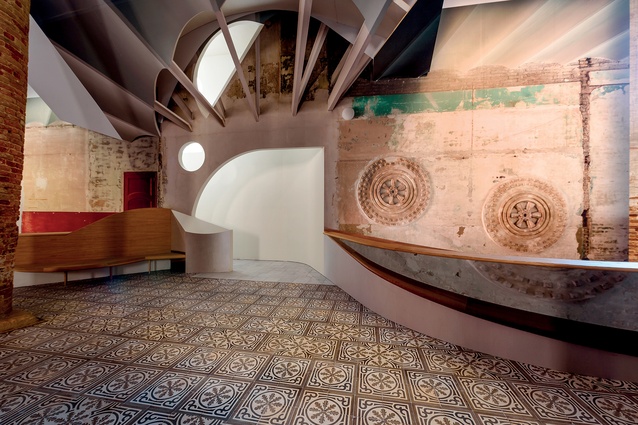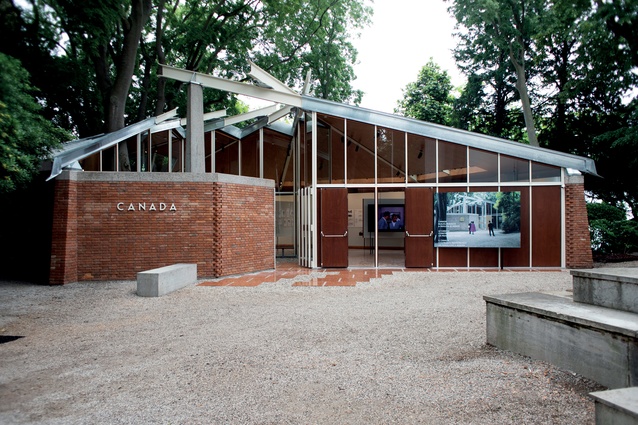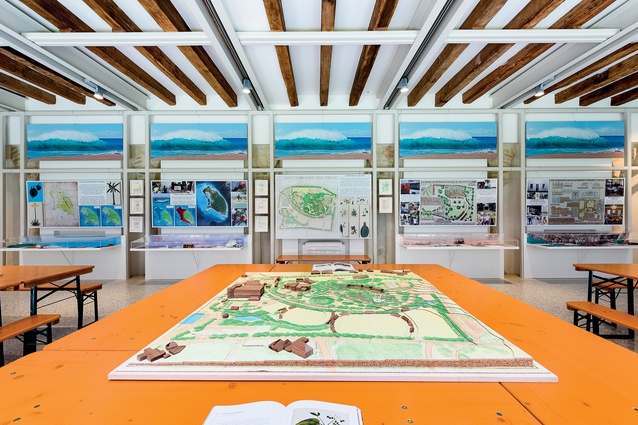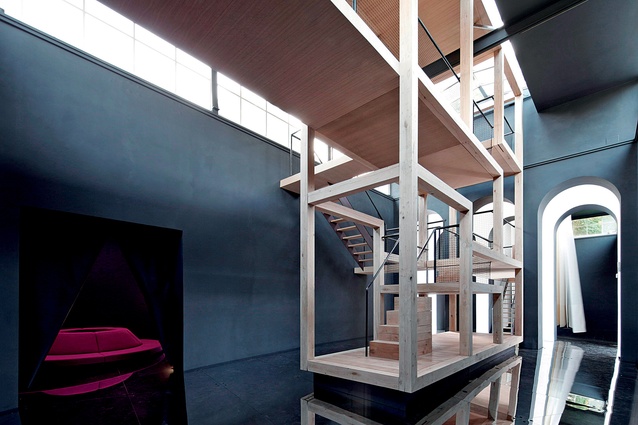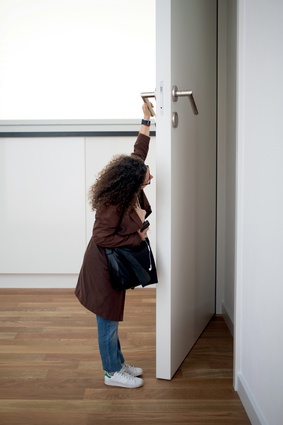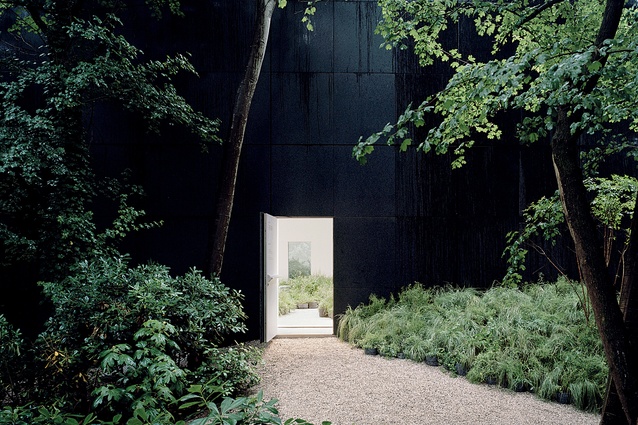Up on the roof in Venice
The theme of Biennale Architettura 2018 is FREESPACE, meaning “a generosity of spirit and a sense of humanity at the core of architecture’s agenda” – and while New Zealand didn’t host an exhibition this time around, Colin Martin reports back on the rest of the world’s offerings.
It can be challenging to see the wood for the trees at international architecture exhibitions but La Biennale di Venezia’s curators Yvonne Farrell and Shelley McNamara have made that task easier in 2018. Their manifesto, asserting that “such an exhibition can remind us in a very intense way that architecture is essential for the well-being of societies, where good examples of buildings matter – not only in themselves – but as living ‘proof’ that architecture is a gift to humanity”, augured well.
Their curated exhibitions at the Arsenale and Giardini have delivered on that promise, celebrating the physicality of built architecture rather than reiterating architectural theories. Instead of filling the Corderie with myriad small-scale displays, they created a central corridor so that large-scale installations along its sides can be examined easily. They worked their magic at the Central Pavilion, too, overcoming its drawbacks of an asymmetric layout of galleries and different levels.
At the Corderie, the materiality of architecture is demonstrated by the exhibiting architectural practices’ varied choices of timber, metal, concrete, stone, glass or textiles in constructing large-scale installations. Many of their structures are double-height, and allow access to upper levels.
Highlights include: the skilful manipulation of natural light by Flores & Prats (Spain) to animate the central circulation space of a Barcelona theatre and drama centre, created within an abandoned workers cooperative building; a protective roof over a Chinese spring water source by Jensen & Skodvin Architects (Norway); and a spectacular clifftop house restoration and a new seashore library by Vector Architects (China).

Central Pavilion highlights include: an intervention within a half-demolished, former Belgian psychiatric clinic by De Vylder Vinck Taillieu Architects (Belgium), which was awarded a Silver Lion for promising young participants; historical drawings of façades selected by Caruso St John Architects (UK), and exhibited with elevation drawings of some of their own projects and photographs by Philip Heckhausen; and supportive social housing in Los Angeles designed by Michael Maltzan (US), including cutaway dioramas showing tenants’ customisations of their individual apartments.
Curators of national pavilions at the Giardini, Arsenale and elsewhere in the city have responded to Farrell and McNamara’s manifesto, with installations of variable relevance. Recurrent responses include various pavilions colonising their roofs and upper spaces, others focusing on social housing regeneration projects, and others embracing horticulture.
In the Giardini, the British pavilion has been scaffolded and abandoned, unintentionally providing a metaphor for Brexit. Tea is served on a temporary viewing platform above the roof, which is accessed by an external staircase. Fortunately, although the pavilion is empty, 10 UK architectural practices are included in the Corderie and Central Pavilion exhibitions, where it is possible to see examples of contemporary British architecture.
Vantage points on the roof of the nearby Hungarian pavilion also afford views. Within, curators have chronicled public colonisation of Budapest’s Liberty Bridge for a few months in 2016, while it was traffic-free. Across the canal, the upper reaches of the Austrian pavilion are also accessible, via temporary internal staircases.
Australia has filled its pavilion and immediate surroundings with 10,000 plants, including 65 grassland species, promoting natural habitat repair. Two-channel videos of 15 antipodean projects, notably Robin Boyd’s Featherston House (1967–1969), are projected inside the gallery.
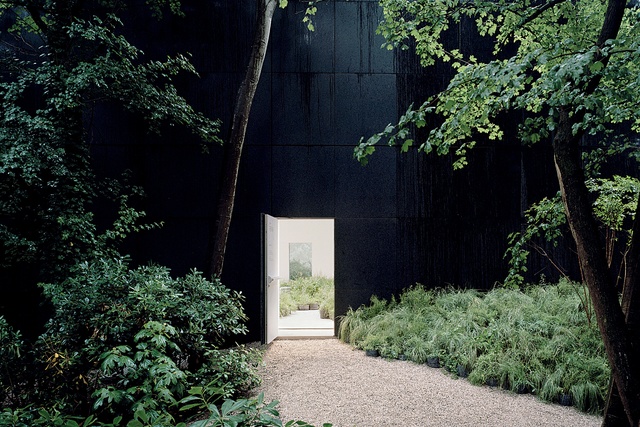
Four case studies at the Danish pavilion include an ongoing regeneration of a 1960s’ social housing estate. (The best that the UK has been able to offer regarding social housing is a salvaged section of the façade of Alison and Peter Smithson’s demolished Robin Hood Gardens estate (1972) and a short length of a ‘street in the sky’, at the Arsenale.)
Three nations have focused on the architecture of their own pavilions. The recently restored Canadian pavilion chronicles its construction and opening at the 1968 International Art Exhibition. (Contemporary indigenous architecture is profiled separately at the Arsenale.) The Venezuelan pavilion, currently undergoing restoration, presents Carlo Scarpa’s original designs. The Swiss pavilion, whose interior has been reconfigured to provide Lilliputian and Brobdingnagian variations, as a commentary on the prescribed height of Swiss domestic interiors, was awarded Best National Participation.
An inspired end-of-life architectural experience is provided by the Vatican’s inaugural exhibition of 10 funeral chapels, commissioned from international architects, on the island of San Giorgio Maggiore. Australian architect Sean Godsell’s timber chapel, its tower open to the sky and gilded within to reflect light into the interior, and with swing-out wall-flaps, evokes a shearing-shed vernacular.
Other national pavilions, including the inaugural presentation by Antigua and Barbuda (Dorsoduro) and the United States (Giardini), tackle environmental issues; Antigua uses simple analogue graphic presentations and the US utilises state-of-the-art digital graphics, including nocturnal satellite surveillance.

Lithuania’s first independent presentation has taken its cue from Henry David Rousseau’s assertion that, “Hope and the future for me are… in the impervious and quaking swamps”. Set up as a pedagogical laboratory, it uses a system of drainage pipes to mimic the complex ecosystem of wetlands swamps.
“We are interested in the language of place, believing… that the critical role of architecture is to claim… each particular coordinate on this fragile planet, emphasising and highlighting what is specific and in terms of geography, climate and culture,” state Farrell and McNamara. Where better to begin than in Venice?
At the 12th International Architecture Exhibition in 2012, in association with muf architecture, Jane da Mosto (We Are Here Venice) installed a living section of the Venetian Lagoon in the British pavilion, to raise awareness of its environmental vulnerability. Working with Assemble architects, da Mosto has now created a permanent installation, Laguna Viva, at the V-A-C Foundation (Dorsoduro).
Freespace, 16th International Architecture Exhibition, Venice Biennale, Italy, runs until 25 November 2018. Find out more here.




